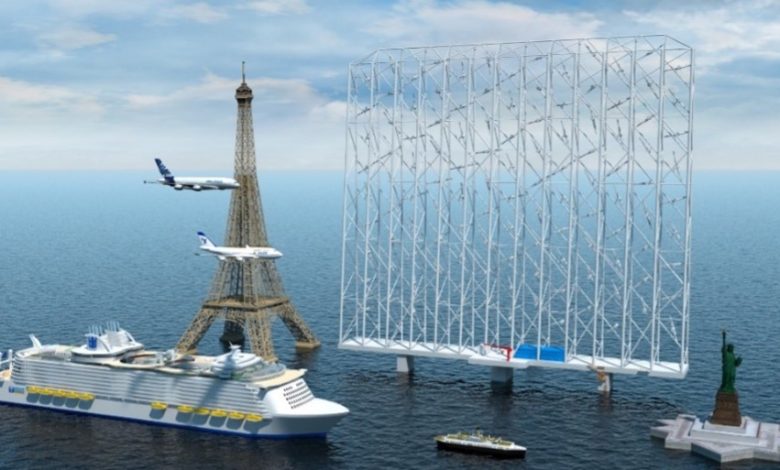Norwegians unveil new floating offshore wind technology

Norwegian floating offshore wind developer Wind Catching Systems is collaborating with Aibel and the Institute for Energy Technology (IFE) to commercialise a new solution for floating offshore wind farms, which is said to cut land use by 80% and helps floaters to produce electricity at the cost of bottom-fixed solutions.
The technology consists of floating multiturbine parks featuring a number of 1 MW turbines assembled in a large sail. According to Wind Catching, one sail is five times as efficient as a conventional offshore wind turbine and can produce energy for 80,000 households.
Wind Catching said it plans to complete the technical verification during 2021 and make floating offshore wind competitive from 2022-2023. The goal is also to produce electricity that competes with other energy sources without subsidies.
“Simply put, we will deliver floating offshore wind with the costs of bottom-fixed solutions, which provides great opportunities on a global basis for the Norwegian supplier industry,” said Ole Heggheim, CEO of Wind Catching Systems.
Wind Catching will challenge today’s conventional technology solutions
Wind Catching envisions a lifespan of 50 years for its wind parks, with cost-effective maintenance compared to current floating offshore wind solutions. It will look to solve sustainability problems related to the reuse of turbine blades, fishing resources and CO2 emissions from installation and maintenance.
Investment companies Ferd and North Energy are among the owners of Wind Catching and see significant growth and export opportunities.
“Wind Catching will challenge today’s conventional technology solutions with the groundbreaking and patented design. Here, the operators and developers can get the production costs they hope to reach in 2030-2035 in a short time. Given that the technology verification confirms what we believe, there are significant opportunities for Wind Catching on the major development projects in the North Sea, on the west coast of the USA and in Asia in the coming decades, said Rachid Bendriss, investment director at North Energy.

They should go public via a SPAC on the US exchanges and cash out when the holding period expires. Bank your money without ever needing to produce even a prototype. That’s how the EV and battery “startups” do it this side of the pond.